Wind Power Turbine Guide: Home and RVs
Harness the power of the wind with this expert guide on home wind power turbines. From selection to installation, get ready to transform the breeze into electricity.
WIND GUIDE
8 min read

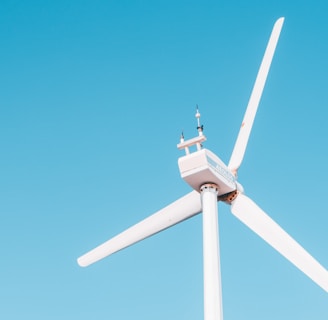
This guide details how to choose the best wind power turbine for your home, considering factors like size, cost, and energy needs. It also covers the installation and maintenance of your wind energy system for optimal performance.
"A Strong Foundation Is Essential."
Wind Power Turbine Guide for Home and RVs
The rotor is the core component of a home wind power system, consisting of blades that convert wind energy into mechanical power. These blades are designed to capture the kinetic energy of the wind, which is then transformed into electricity through the generator. When considering a wind turbine for residential use, the rotor's size and design are crucial as they directly affect the system's efficiency and the amount of power that can be generated.
Home wind turbines offer a promise of energy independence, enabling homeowners to tap into the natural and abundant resource that is the wind. By integrating a wind power system, you can significantly reduce your reliance on the grid and decrease your electricity bills. The technology behind these systems has advanced to the point where residential wind turbines are more accessible and efficient than ever, making them a smart investment for those looking to embrace renewable energy.
Investing in a wind power system for your home involves initial costs that can vary widely based on turbine size and complexity. It's important to consider not only the purchase price but also installation fees, potential site preparation costs, and ongoing maintenance. Despite these upfront expenses, the long-term savings on energy bills and potential government incentives can make wind turbines financially viable over time.
Wind power generators for RVs are a pragmatic solution for those seeking energy autonomy while traveling. These devices are tailored to be lightweight and have a low profile to minimize drag and resistance while the vehicle is in motion. For installation, it's essential to choose a model that is rated for mobile use, ensuring that it can handle the vibrations and varied wind conditions encountered during travel. Opt for a kit that includes a marine-grade turbine, known for its durability, and a mounting system that is compatible with your RV's specific make and model for a secure fit.
When selecting a wind generator for your RV, focus on units that are designed for variable wind speeds, with an auto-brake or shutdown feature to prevent damage in high winds. The generator's output should match your RV's electrical system voltage to ensure compatibility and maximize charging efficiency. It's also advisable to invest in a model with integrated charge control, to protect your batteries from overcharging and to manage energy flow effectively.
We Recommend This Wind Rotor Kit for Home Installation
Site Assessment for Wind Availability: Use an anemometer to measure wind speed at your intended parking locations. Look for a generator that can start producing power at low wind speeds, ensuring usability in various environments.
Permit and Regulation Compliance: Even though RVs are mobile, check with local municipalities where you plan to park long-term to comply with any ordinances regarding wind turbine installations.
Turbine Size and Weight Consideration: Select a turbine that provides sufficient power for your needs without exceeding the weight capacity of your RV. The turbine should be compact to reduce drag and should have a mounting system that distributes weight evenly to avoid structural stress on your vehicle.
Mounting and Foundation Preparation: The mounting system should be designed for quick deployment and stowage. Use a reinforced mounting bracket and secure it directly to the RV's frame or roof structure for stability.
Tower Erection and Turbine Attachment: Assemble the tower and attach the turbine according to the manufacturer’s instructions, using lock-tight fittings and vibration-resistant materials to withstand travel conditions.
Electrical System Connection: Integrate the turbine with your RV's electrical system, using the appropriate gauge wiring and fuses. Ensure the system includes a deep-cycle battery bank sized for your power needs and a charge controller compatible with your turbine's output.
Safety Checks and System Testing: After installation, test the wind generator at various speeds to ensure it operates correctly. Check all connections for security, and ensure the turbine's operation does not interfere with RV functions or cause excessive noise.
Maintenance Planning: Establish a maintenance schedule based on the manufacturer's recommendations. This should include regular checks of the mounting hardware for tightness, inspections of the blades for damage, and verification of electrical connections for corrosion or wear.
Initial Site Assessment:
Conduct a detailed wind resource assessment to measure potential wind energy production at your location.
Check for any local zoning restrictions and environmental considerations that could impact the installation.
System Sizing and Design:
Determine the size and type of wind turbine needed based on your household's energy consumption and the wind assessment data.
Design the system layout, including the position of the turbine, distance from the house, and connection to the electrical grid.
Permitting and Approvals:
Obtain all necessary building and electrical permits from local authorities.
Ensure that the project meets National Electrical Code (NEC) standards and any local codes specific to wind power installations.
Foundation Construction:
Pour a concrete foundation designed to support the weight and height of the turbine tower.
Allow sufficient time for the foundation to cure and gain structural integrity before proceeding.
Tower and Turbine Assembly:
Assemble the tower on the ground, attaching the turbine and rotor assembly as directed by the manufacturer.
Ensure all bolts and connections are properly torqued and secured to handle dynamic loads.
Tower Erection:
Safely raise the tower into place, often requiring a crane or specialized lifting equipment.
Double-check that the tower is vertical using a plumb line or level.
Electrical Installation:
Run underground electrical cables from the base of the tower to your home's electrical system, adhering to the NEC and local codes.
Install a disconnect switch and, if required, a transformer between the turbine and your home's electrical panel.
Battery Storage System (if off-grid or hybrid):
Set up a battery bank sized to meet your energy storage needs, including a charge controller to manage power flow.
Install a power inverter to convert the DC power from the turbine and batteries to AC power for home use.
Utility Grid Connection (if grid-tied):
Coordinate with the local utility company for grid interconnection and net metering arrangements.
Install any additional safety equipment required for grid-tied systems, such as anti-islanding protection.
System Testing and Commissioning:
Perform a thorough check of all electrical connections and mechanical components.
Test the system to ensure it is operating correctly and safely, and that it is effectively integrated with your home's electrical system.
Final Inspection and Approvals:
Schedule a final inspection with the local building department to obtain approval for the installation.
Ensure that the system passes all inspections required by the local utility and any other regulatory bodies.
Maintenance Planning:
Establish a maintenance schedule based on the manufacturer's guidelines to ensure long-term reliability.
Train on how to safely shut down and restart the system for maintenance or in case of an emergency.
Wind Turbine Installation Process for Residential Homes
Installation Process for Wind Generators on RVs or Mobile Homes
Wind Power Generator for RVs or Mobile Homes
Wind Power Rotor: The Heart of Your Home Energy

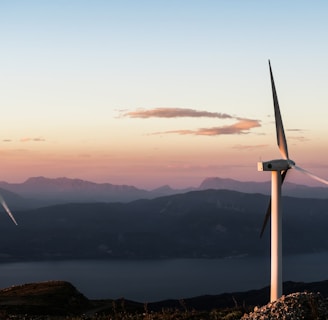
Wind Rotor Kits on Amazon
Longevity and Reliability: Key to Wind Energy Residential Systems
For residential homes, installing a wind turbine is an investment in both the property and the environment. Choose a turbine with a robust design and a warranty that ensures its longevity. A residential turbine should have a rated life of at least 20 years, with a maintenance schedule that's manageable for a homeowner. Look for features that protect the system during extreme weather, such as automatic blade pitching or stalling mechanisms, to avoid damage during high winds.
The inverter is the heart of your home's wind energy system, converting the turbine's output into usable AC power. Select an inverter that is rated for the output of your turbine and compatible with your home's electrical system. It should include safety features like automatic shutdown in the event of a grid failure to protect your system and ensure compliance with local grid codes.
The selection of an off-grid solar kit requires careful consideration of your energy consumption, as the system needs to be sized appropriately to handle your load requirements and ensure enough power during periods of low sunlight. The battery storage component is particularly crucial, as it must be capable of storing sufficient energy to power your home or application through the night and cloudy days. Moreover, off-grid systems often incorporate additional features such as backup generators or wind turbines to provide power during prolonged periods of insufficient sunlight, ensuring a continuous power supply.
Investing in an off-grid solar kit represents a significant upfront cost but can result in substantial long-term savings and independence from utility companies. It's a proactive step towards a sustainable lifestyle, reducing one's carbon footprint and participating in the global shift towards renewable energy sources. Proper planning, installation, and maintenance are key to maximizing the efficiency and lifespan of an off-grid solar system, making it a viable and rewarding energy solution for those willing to embrace the off-grid lifestyle.
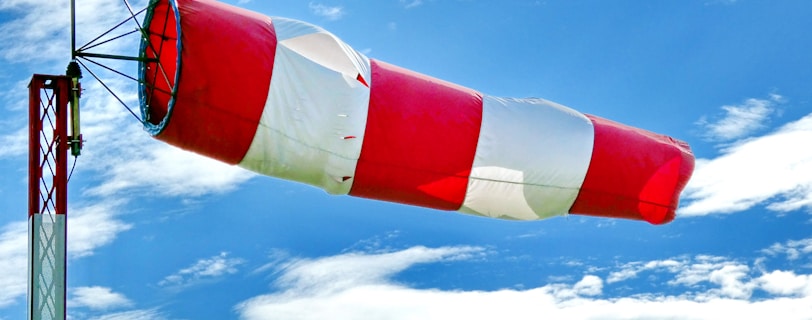
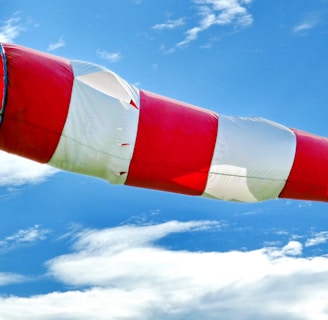
For our Artice on Using or Getting a Solar Generator
If Interested in Maximizing Solar Electric Efficiency
Wind Power Rotor DIY
Selecting the Right Wind Power Rotor for Residential Use
Selecting the appropriate wind power rotor is a pivotal decision in the journey to harnessing residential wind energy. The rotor, composed of the blades and hub, is responsible for capturing wind energy and initiating the conversion to electrical power. Here's a breakdown of considerations for choosing the right wind power rotor:
Rotor Diameter: The diameter of the rotor determines the area swept by the blades and, consequently, the amount of wind energy that can be captured. A larger rotor diameter will typically capture more energy, but requires a stronger tower and foundation.
Blade Material and Design: Blades are commonly made from composite materials that offer a blend of strength and flexibility. Their design can affect performance, with some shapes being more efficient at capturing energy at low wind speeds.
Number of Blades: Most residential turbines have either two or three blades. Three-bladed turbines tend to be more balanced and quieter, while two-bladed models can be more cost-effective and easier to install.
Tip Speed Ratio (TSR): TSR is the ratio of the speed of the blade tips to the speed of the wind. A higher TSR means the rotor is good at capturing energy in higher winds, whereas a lower TSR rotor will perform better in lighter winds.
Compatibility with Generator: Ensure that the rotor is compatible with the generator's specifications. The rotor and generator must be matched in terms of their rated speeds and power outputs to optimize efficiency.
Noise Considerations: The design of the rotor can influence the amount of noise produced. For residential areas, a rotor designed to minimize noise can be crucial for both personal comfort and meeting local noise regulations.
Cut-in Speed: This is the minimum wind speed at which the turbine will start generating power. A lower cut-in speed rotor can produce more energy over time, especially in areas with variable wind speeds.
Safety and Braking Systems: Consider rotors with integrated safety features, such as automatic braking systems that engage to prevent damage during excessively high winds.
By thoroughly evaluating these aspects, homeowners can ensure that the rotor chosen for their residential wind turbine will meet their specific needs and environmental conditions, leading to a more efficient and effective home energy system.

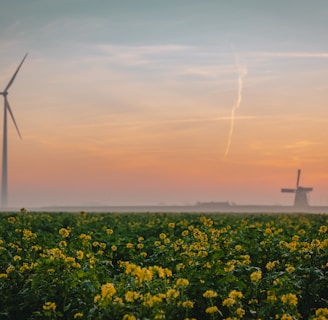
We Recommend This Vertical Wind Energy System
To support our work, we may earn a commission when you buy through links on our site. As an Amazon Associate, I earn from qualifying purchases.
Cookie Notice: Our website uses cookies to enhance your browsing experience. By continuing to use our site, you agree to our use of cookies. If you wish to manage your cookie preferences, you may do so in your browser settings.
To support our work, we may earn a commission when you buy through links on our site. As an Amazon Associate, I earn from qualifying purchases.This page may contain affiliate links, which means if you click through and make a purchase, we may receive a commission at no additional cost to you. This helps support our research and editorial team.




